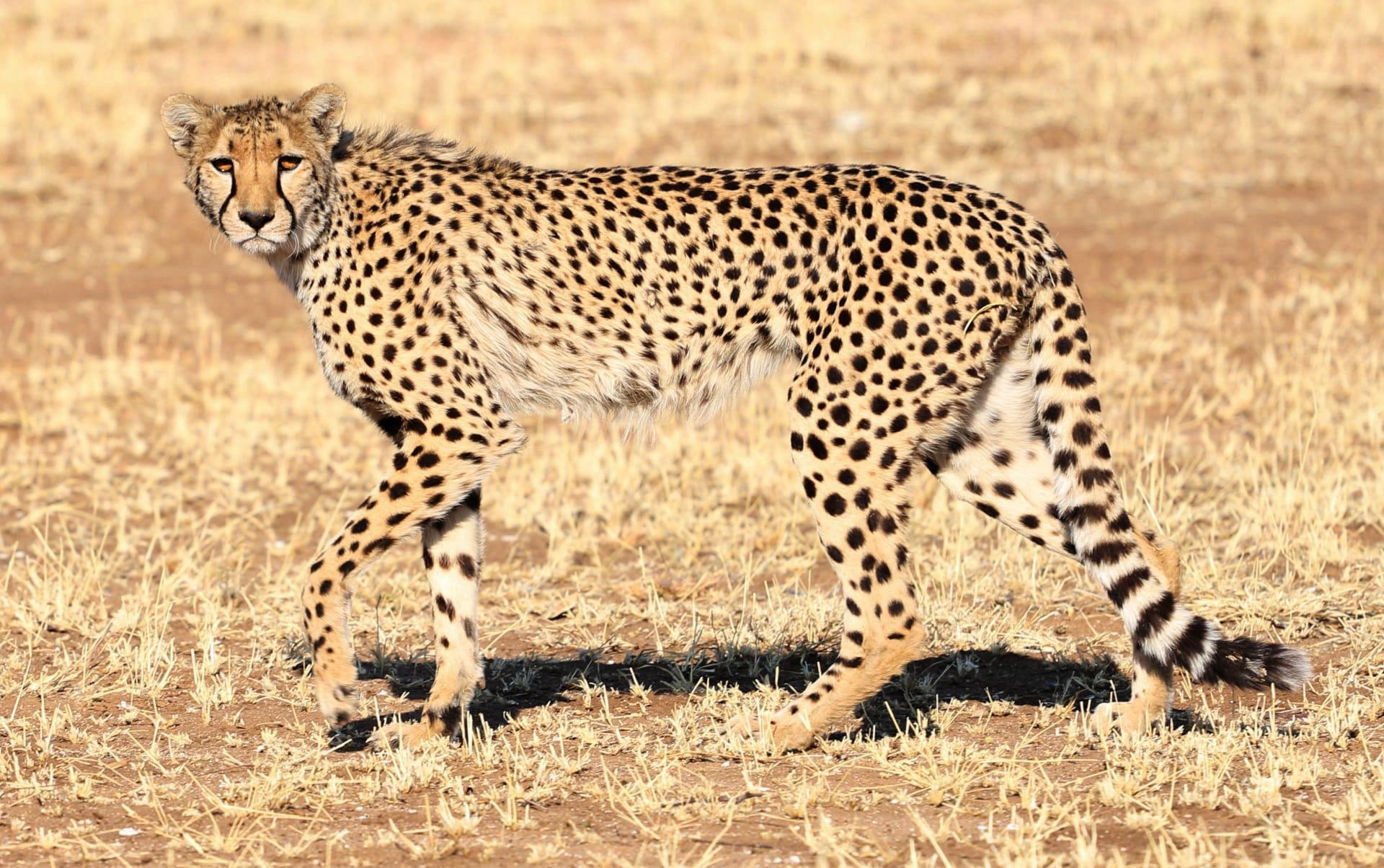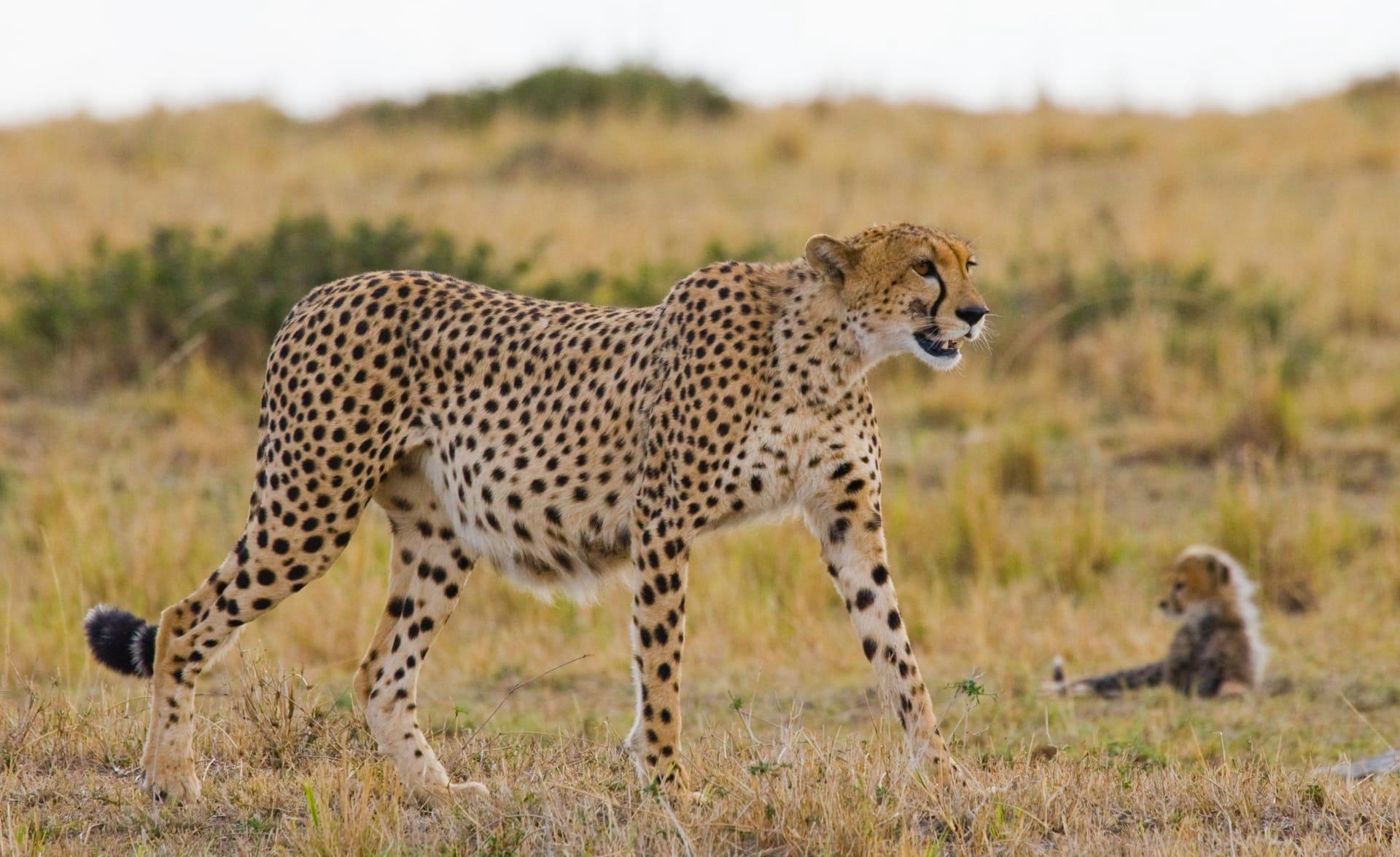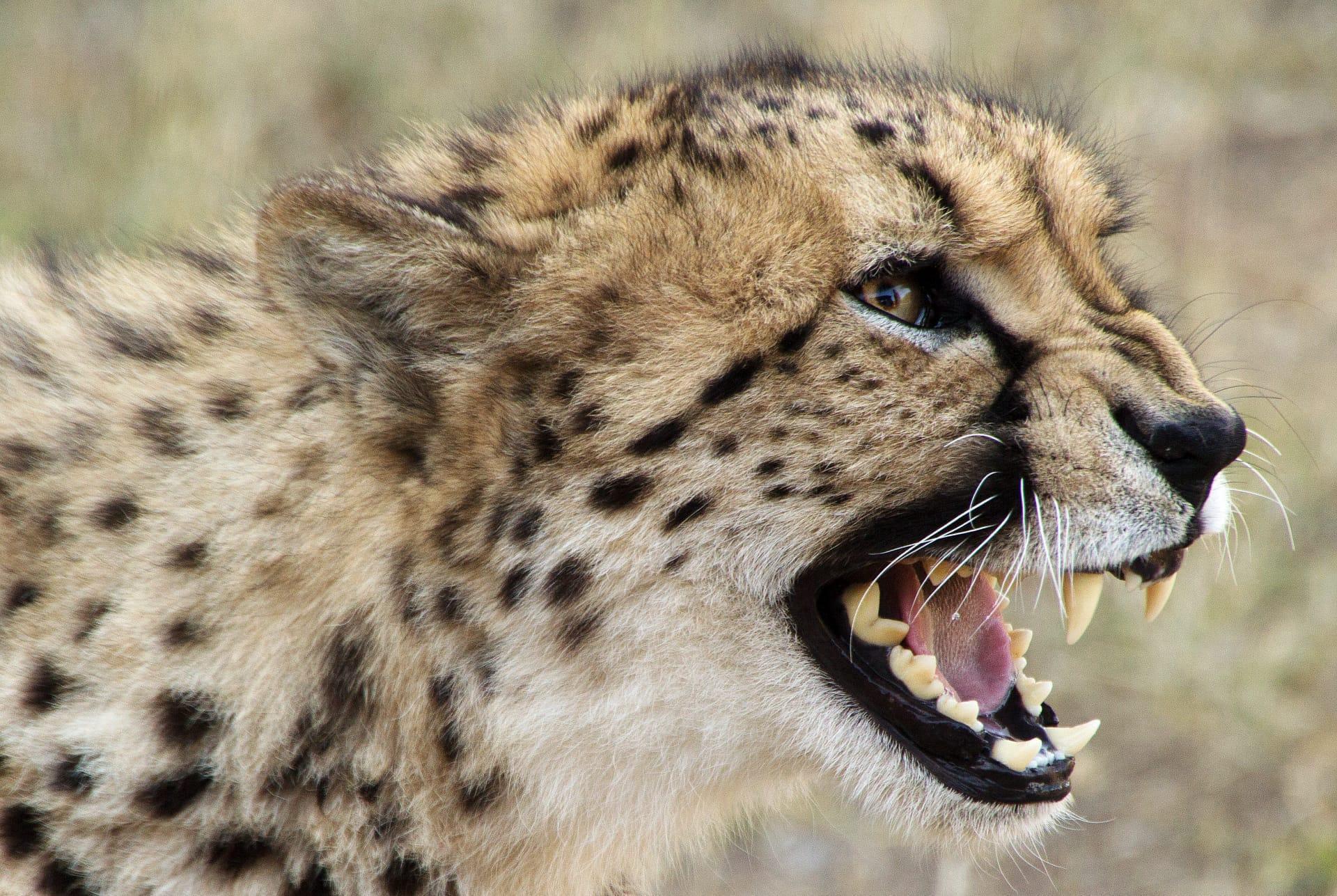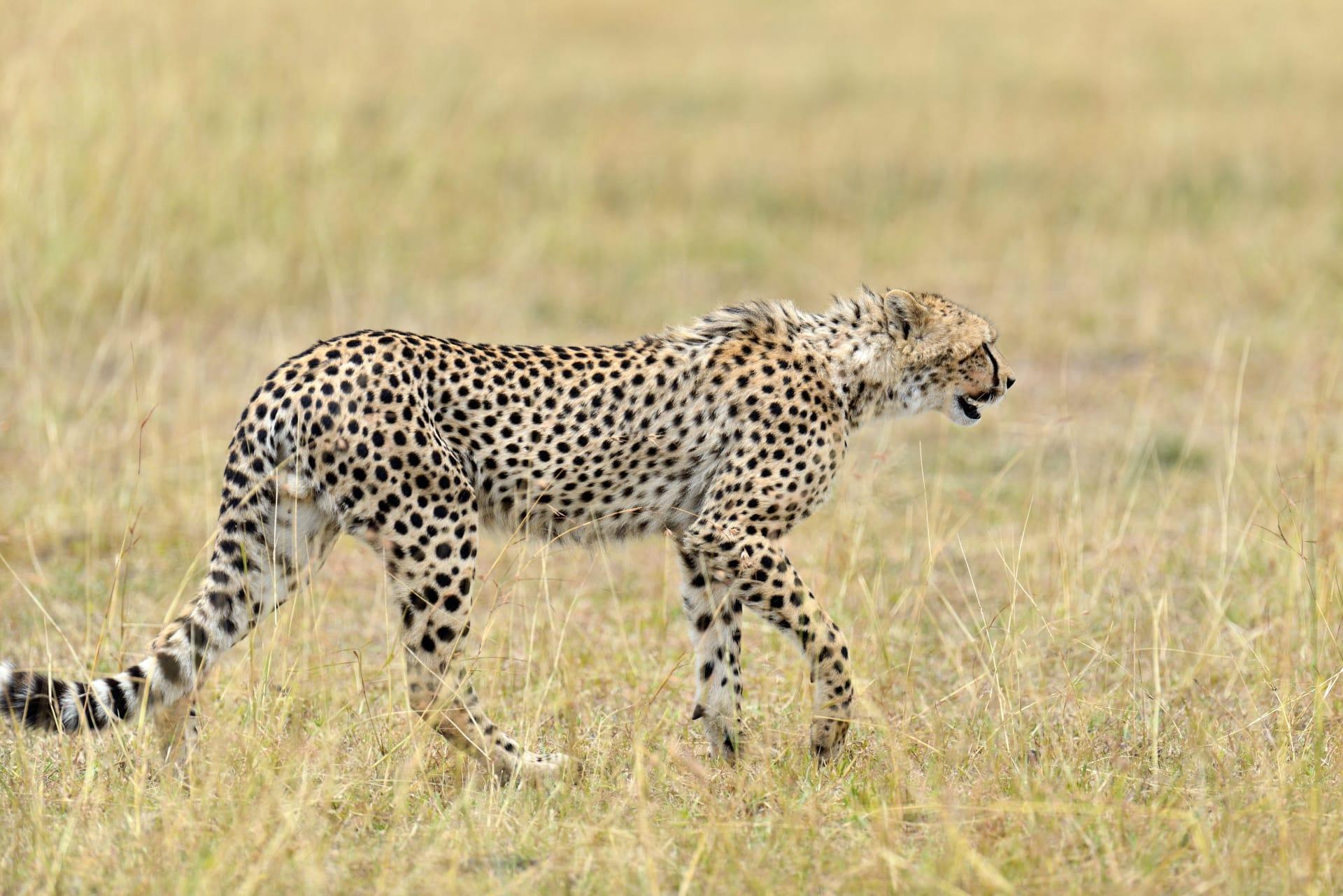Cheetah Characteristics
- Home /
- Mini Encyclopedia /
- Animal /
- Cheetah Characteristics
1
Cheetahs are remarkable creatures, known for their sleek build and impressive speed. An adult cheetah typically measures around 3.5 to 4.5 feet in length, excluding a tail length of about 2 to 2.8 feet. They stand approximately 2 to 3 feet tall at the shoulder and weigh between 75 to 145 pounds. Females are slightly smaller than males. Their lifespan in the wild is around 8 to 12 years, but they can live up to 17 years in captivity.
The most distinctive organ of a cheetah is undoubtedly its respiratory system. The large nasal passages ensure ample airflow, essential during high-speed chases. Their lungs and heart are proportionally bigger than those of other big cats, supporting rapid oxygen intake. This unique respiratory system efficiently supports their incredible speeds, making them the fastest land animals, capable of reaching up to 60 to 70 miles per hour in just a few seconds.

2
Question: Why don't cheetahs climb trees like other big cats?
Answer: The reason cheetahs aren't typically tree climbers lies in their body structure. Unlike leopards or other big cats, cheetahs have a slender, lightweight body and long legs designed for speed, not for climbing. Their semi-retractable claws, providing excellent grip at high speeds, are not as effective for climbing as the fully retractable claws of a leopard. Additionally, their muscular structure is optimized for sprinting, lacking the brute strength necessary for climbing large trees.

3
Cheetahs are renowned for their incredible speed and agility. They can accelerate from 0 to 60 miles per hour in just a few seconds, with a top speed recorded at around 75 miles per hour. This speed is only sustainable for short bursts covering distances up to 1,500 feet. Their lightweight frame, long legs, and specialized muscles allow for this exceptional acceleration.
When hunting, cheetahs rely on both their incredible speed and stealth. They approach their prey quietly, then use their burst of speed to quickly close the distance. They typically target small to medium-sized ungulates, such as gazelles. After catching their prey, cheetahs need to rest before eating to recover from the high-energy chase, making them vulnerable to other predators who often steal their catch.

4
Cheetahs are predominantly found in the open savannas and grassland areas of Sub-Saharan Africa, though some small populations exist in Iran. These habitats provide the open space needed for their high-speed chases. They require large territories for hunting, with ranges varying from 5 to 30 square miles.
In terms of reproduction, cheetahs have a gestation period of around 90 to 95 days. Females give birth to a litter of typically three to five cubs. The cubs are born blind and vulnerable, relying entirely on their mother for survival. They learn hunting skills from their mother and usually stay with her for about one and a half years before becoming independent.

5
Book: "The Cheetah: Evolution, Ecology, and Behavior" by David M. Wilson and Melvin E. Sunquist is a comprehensive study of cheetahs. Published in the United States in 2001, it offers in-depth insights into the evolution, habitat, hunting techniques, and conservation of these magnificent animals. The authors, both renowned wildlife biologists, combine scientific research with engaging narrative to provide a thorough understanding of cheetahs.
Book: "Cheetahs: Biology and Conservation" edited by Philip Nyhus, Lorraine Boast, and Anne Schmidt-Küntzel, published in 2018, is another essential read. This book, a collection of work by various experts, covers the biology, genetics, and conservation efforts surrounding cheetahs. It also delves into human-wildlife interactions and the challenges facing cheetah conservation. With contributions from leading cheetah scientists and conservationists, it provides a detailed and multifaceted view of these fascinating creatures.